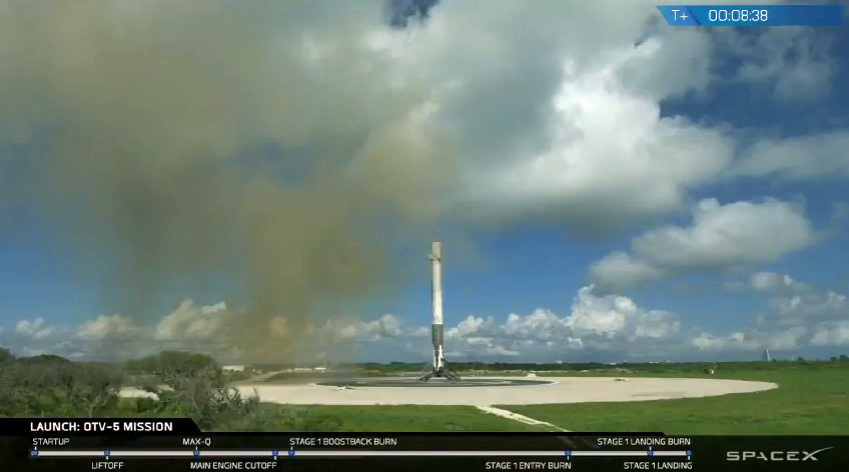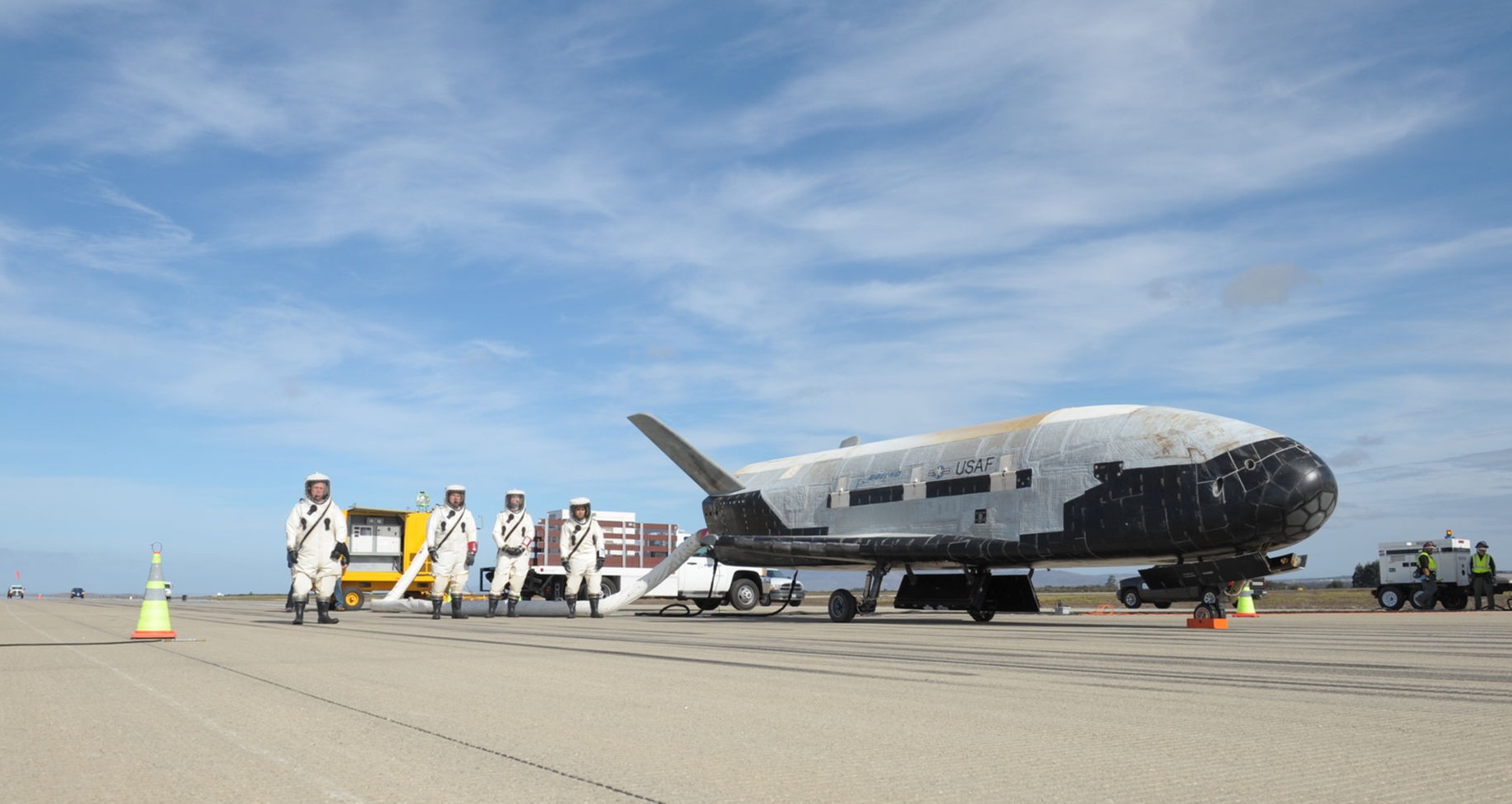SpaceX Rocket Launches X-37B Space Plane on Secret Mission, Aces Landing
The fifth mystery mission of the U.S. Air Force's X-37B space plane is now underway.
A SpaceX Falcon 9 rocket carrying the robotic X-37B lifted off today (Sept. 7) at 10 a.m. EDT (1400 GMT) from historic Launch Complex 39A at NASA's Kennedy Space Center (KSC) in Florida.
About 2.5 minutes into the flight, the Falcon 9's two stages separated. While the second stage continued hauling the X-37B to orbit, the first stage maneuvered its way back to Earth, eventually pulling off a vertical touchdown at Landing Zone 1, a SpaceX facility at Cape Canaveral Air Force Station, which is next door to KSC. [The X-37B Space Plane: 6 Surprising Facts]

"Everything proceeded nominally," SpaceX materials engineer Michael Hammersley said just after the launch during live commentary. "Smooth first stage ascent, smooth second stage separation and start, and then that beautiful landing that you just saw."
The company has now aced 16 such booster landings during orbital liftoffs — seven at Landing Zone 1 and nine on robotic "drone ships" at sea — including a string of 12 in a row. (This streak does not take into account the explosion of a Falcon 9 during a pre-launch test on Sept. 1, 2016; the last failed landing attempt came in June 2016.) These touchdowns are part of SpaceX's effort to develop rapidly reusable spaceflight systems, which company founder and CEO Elon Musk has said could slash the cost of space exploration and utilization.
But the landing was a secondary objective. The main goal today was getting the reusable X-37B — also known as the Orbital Test Vehicle (OTV) — into orbit.
The Air Force is known to possess two X-37Bs, both of which were built by Boeing. The uncrewed vehicles look like NASA's now-retired space shuttle orbiters, but are much smaller; each X-37B is 29 feet (8.8 meters) long and 9.6 feet (2.9 m) tall, with a payload bay the size of a pickup truck bed. For comparison, the space shuttles were 122 feet (37 m) long, with 78-foot (24 m) wingspans.
Get the Space.com Newsletter
Breaking space news, the latest updates on rocket launches, skywatching events and more!
Like the space shuttle, the X-37B launches vertically and comes to back to Earth horizontally, in a runway landing.
Together, the two X-37Bs have completed four space missions, each of which has set a new duration standard for the program. OTV-1 lifted off in April 2010 and logged 224 days in orbit; OTV-2 launched in March 2011 and spent 468 days in space. OTV-3 circled Earth for nearly 675 days, from December 2012 to October 2014, and OTV-4 spent 718 days in space, launching on May 20, 2015, and landing on May 7, 2017.

Exactly what the X-37B did during those four missions, or what it will do during the newly launched OTV-5, is a mystery; most X-37B payloads and activities are classified. This secrecy has spawned some speculation that the vehicle may be a space weapon of some sort. But the Air Force has vigorously denied this idea, stressing that the space plane is just testing technologies for future spacecraft and hauling experiments to orbit.
One such OTV-5 experiment that has been divulged is the Air Force Research Laboratory Advanced Structurally Embedded Thermal Spreader payload, which will "test experimental electronics and oscillating heat pipe technologies in the long-duration space environment," according to an Air Force statement.
OTV-5 is the first X-37B mission to use a SpaceX rocket. On all four previous flights, the X-37Bs rode atop United Launch Alliance Atlas V launchers. [How the X-37B Military Space Plane Works (Infographic) ]
The space plane will also operate in a higher-inclination orbit on the OTV-5 mission than it has during any other mission, Air Force officials said.

"The many firsts on this mission make the upcoming OTV launch a milestone for the program," Randy Walden, director of the Air Force Rapid Capabilities Office, said in the same statement, which was issued last week. "It is our goal to continue advancing the X-37B OTV so it can more fully support the growing space community."
Today's launch was SpaceX's second U.S. national-security mission. The first came this past May, when a Falcon 9 lofted a classified spy satellite for the National Reconnaissance Office.
Editor's Note: Space.com senior producer Steve Spaleta contributed to this report.
Follow Mike Wall on Twitter @michaeldwall and Google+. Follow us @Spacedotcom, Facebook or Google+. Originally published on Space.com.
Join our Space Forums to keep talking space on the latest missions, night sky and more! And if you have a news tip, correction or comment, let us know at: community@space.com.

Michael Wall is a Senior Space Writer with Space.com and joined the team in 2010. He primarily covers exoplanets, spaceflight and military space, but has been known to dabble in the space art beat. His book about the search for alien life, "Out There," was published on Nov. 13, 2018. Before becoming a science writer, Michael worked as a herpetologist and wildlife biologist. He has a Ph.D. in evolutionary biology from the University of Sydney, Australia, a bachelor's degree from the University of Arizona, and a graduate certificate in science writing from the University of California, Santa Cruz. To find out what his latest project is, you can follow Michael on Twitter.









